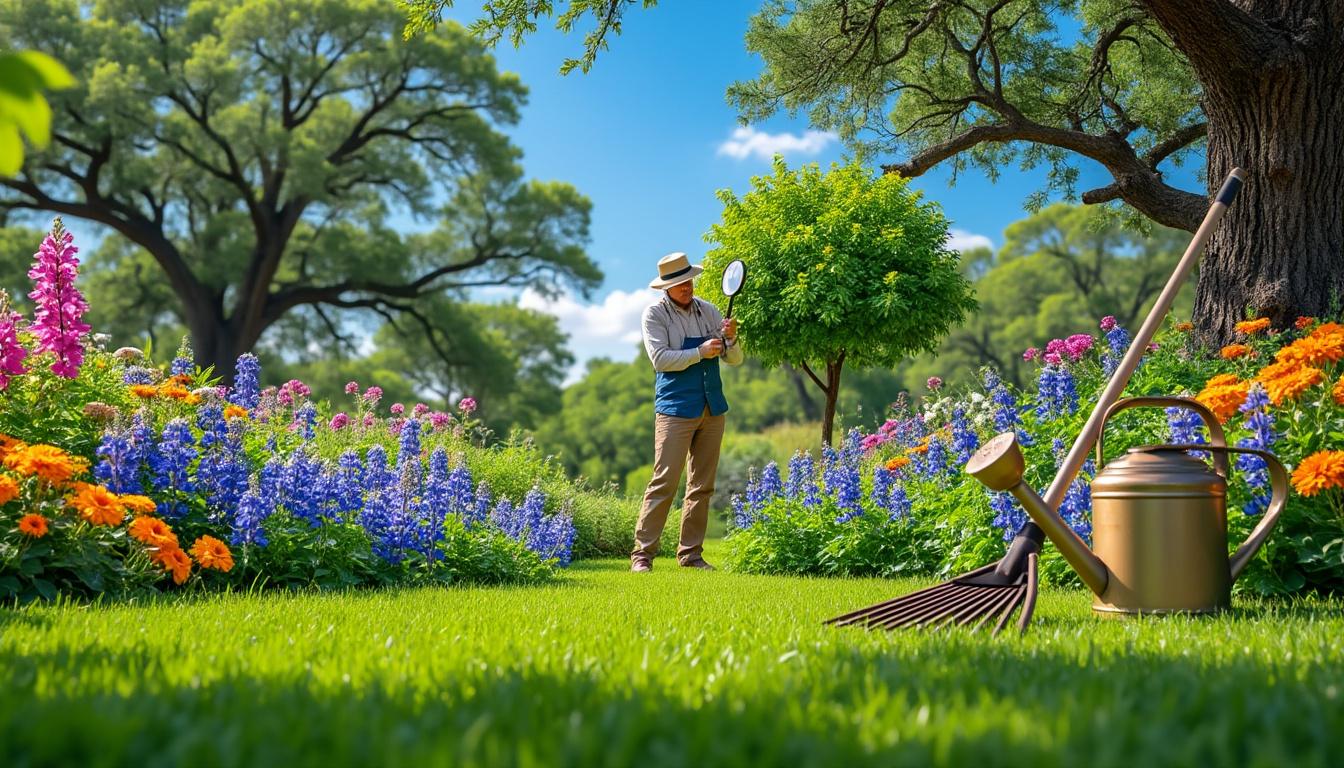Gardening in Texas demands specialized knowledge to thrive amid its unique climate and soil conditions. From unearthing rare and captivating blooms that add exceptional character to your garden, to proactively managing tree diseases that threaten the health of your landscape, and perfecting lawn care techniques tailored to Texas’s challenges, every step plays a pivotal role. The expertise offered by organizations like Texas A&M AgriLife and resources from trusted suppliers such as Burpee and Proven Winners are indispensable in crafting a vibrant, resilient garden. Through a fusion of local wisdom and innovative practices, Texans can elevate their outdoor spaces into stunning natural sanctuaries.
Discovering Rare Blooms Perfectly Suited for Texas Gardens
Uncovering rare blooms that can flourish in Texas gardens requires understanding native species and carefully selected cultivars adapted to local climates. Incorporating plants from Monrovia and Eden Brothers alongside native varieties ensures diversity and year-round interest.
- Texas Bluebells (Eustoma grandiflorum): Though rare, these delicate flowers thrive in well-drained soils and sunny spots.
- Mexican Feathergrass (Nassella tenuissima): Adds soft texture and is drought-tolerant.
- Scarlet Clematis (Clematis texensis): A vivid climber producing unique bell-shaped red flowers.
- Texas Mountain Laurel (Sophora secundiflora): Known for its fragrant purple blooms and resilience.
Shopping from reputable nurseries like Gardener’s Supply Company or Proven Winners guarantees access to healthy, well-adapted specimens. To boost survival rates, give priority to plants acclimated to Texas’s heat and occasional drought.
| Rare Bloom | Best Location | Watering Needs | Sunlight |
|---|---|---|---|
| Texas Bluebells | Rocky, well-drained soil | Moderate | Full Sun |
| Mexican Feathergrass | Open garden beds | Low | Full Sun |
| Scarlet Clematis | Fences, supports | Moderate | Partial Sun |
| Texas Mountain Laurel | Shade to partial sun | Low | Partial Sun |
Strategies To Enhance Growth and Bloom Longevity
Implementing soil enrichment and appropriate mulching can conserve moisture and maintain nutrient levels essential for rare blooms. Expert advice from Texas A&M AgriLife recommends targeted fertilization schedules and pest management to avoid common threats without overusing chemicals.
- Use natural mulch like pine needles or wood chips.
- Adopt drip irrigation systems to ensure steady moisture control.
- Choose organic fertilizers with slow release properties.
- Monitor bloom cycles to adjust care routines accordingly.
Comprehensive Approaches to Tackling Tree Diseases in Texas Landscapes
Tree diseases can devastate urban and suburban landscapes if left unaddressed. Proper identification, prevention, and treatment are essential components, supported by expertise from The Arbor Day Foundation and local agricultural extensions.
- Oak Wilt: A fast-spreading fungal disease requiring immediate removal of infected limbs.
- Anthracnose: Common on pecans and maples, manageable via fungicidal sprays and sanitation.
- Powdery Mildew: Visible as white powder on leaves; treatment involves improved airflow and fungicides.
- Texas Leaf Spot: Particularly harmful to elm and hackberry trees; timely pruning reduces spread.
Collaborating with Lawn Doctor and using testing services offered by Texas A&M AgriLife improves diagnostic precision and customizes interventions effectively, preventing further decline.
| Disease | Affected Tree Species | Symptoms | Recommended Control Methods |
|---|---|---|---|
| Oak Wilt | Red Oaks, White Oaks | Leaf discoloration, sudden wilting | Prune infected limbs & destroy debris |
| Anthracnose | Pecans, Maples | Leaf blotches, premature leaf drop | Fungicide sprays, sanitation |
| Powdery Mildew | Various hardwoods | White powdery coating on leaves | Increase airflow, apply fungicides |
| Texas Leaf Spot | Elms, Hackberries | Spotted leaves, early leaf loss | Prune affected branches, improve tree vigor |
Proactive Maintenance and Monitoring to Protect Tree Health
Regular inspection and prompt removal of diseased material prevent the spread. Strategic planting using resistant species from Fisher Farms and routine fertilization keep trees vigorous.
- Schedule seasonal health assessments.
- Use pruning tools disinfected between cuts.
- Educate homeowners through resources like expert minimalist gardening tips to simplify maintenance.
- Establish a spraying timetable as advised by extension services.
Mastering Lawn Care Techniques for Texas Lawns
Perfecting lawn care tailored to Texas’s climate involves choosing appropriate grasses, watering efficiently during heatwaves, and pest management. Burpee and Arcadia Garden provide quality seeds and tools optimized for these tasks.
- Grass Selection: Warm-season grasses like Bermuda and St. Augustine suit Texas well.
- Watering: Deep, infrequent watering conserves water and promotes deep roots.
- Mowing: Maintain recommended height to reduce stress and disease susceptibility.
- Pest Control: Integrated pest management minimizes chemical reliance.
Leveraging insights from Lawn Doctor and aligning lawn care schedules with seasonal changes optimize turf resilience and aesthetics.
| Lawn Care Aspect | Best Practice | Frequency | Tools / Products |
|---|---|---|---|
| Grass Type | Bermuda or St. Augustine | One-time selection | Seeds from Burpee or Arcadia Garden |
| Watering | Deep watering 1-2 times/week | Weekly | Drip irrigation systems |
| Mowing | Keep height at 2-3 inches | Weekly during growing season | Sharp mower blades |
| Pest Control | Use integrated management strategies | Seasonal application | Natural pesticides or Lawn Doctor services |
Adaptive Watering Techniques During Texas Heatwaves
Water conservation is critical. Tailoring watering times in early mornings or late evenings reduces evaporation. Consulting guidelines from organizations like Texas A&M AgriLife efficiently balances greenery with sustainability.
- Install soil moisture sensors to monitor conditions.
- Mulch garden beds near the lawn area.
- Adjust irrigation systems seasonally to reflect weather shifts.
- Refer to garden watering strategies during heatwaves for practical advice.
FAQ on Texas Gardening Essentials
- Which rare plants are most resilient in Texas’s climate? Texas Bluebells and Texas Mountain Laurel stand out for their drought tolerance and adaptability.
- How can tree diseases best be prevented? Regular tree health monitoring, sanitation, and planting resistant species are vital preventive measures.
- What is the optimal mowing height for Texas lawns? Maintaining grass between 2 to 3 inches during the growing season enhances resilience.
- Are organic fertilizers effective for rare blooms? Yes, especially slow-release organic fertilizers recommended by Texas A&M AgriLife promote sustainable growth.
- Where to source expert gardening supplies in Texas? Reliable providers include Gardener’s Supply Company, Monrovia, and Eden Brothers for uncommon plant varieties and quality products.

